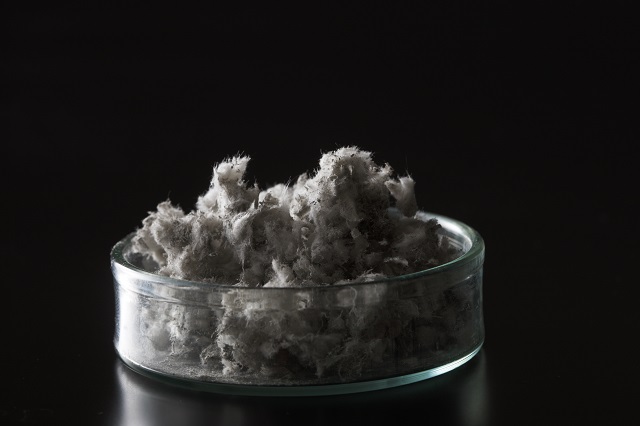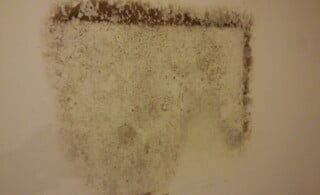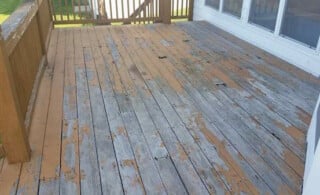What is asbestos?
Asbestos is a term used for fibrous, silicate minerals that naturally resist heat, fire, electricity, and chemical erosion. Asbestos fibers are microscopic and, when combined, can be pulled to make a fluffy consistency. It’s soft, flexible makeup makes it perfect for insulation. You can also mix it into cloth, paper, and plastic to strengthen those materials.
Because of these qualities, asbestos has many uses, especially in the building and construction industries. In recent decades, as health concerns about the material have risen, its use in commercial, industrial, and consumer products decreased. While many other developed countries chose to ban asbestos entirely, current US regulations allow up to one percent of it in newly-made products. However, products containing high amounts of asbestos still exist in older buildings. Chinese and Indian manufacturers also still use it.
While other types of asbestiform minerals exist, the Environmental Protection Agency (EPA) legally defines six types of asbestos in two categories as hazardous materials. According to the Asbestos Hazard Emergency Response Act (AHERA) of 1986, these categories and their accompanying types of asbestos are:
- Serpentine – Chrysotile
- Amphibole – Crocidolite, amosite, anthophyllite, tremolite, actinolite
Health Risks of Asbestos Exposure
Asbestos is the carcinogen, or cancer-causing agent, responsible for mesothelioma. What is mesothelioma? It’s a rare form of cancer that develops in the lining of the lungs, abdomen, or heart after a person breathes in microscopic asbestos fibers. The fibers become trapped in the body and, over a period of 10 to 40 years, cause disease.
Exposure to asbestos can also lead to non-cancerous diseases. Asbestosis is scarring of the lung tissue that causes breathlessness and coughing. Pleural disease affects the tissue of the lining of the lungs, and can lead to fluid on the lungs, pain, and bleeding.
Construction contractors and others who worked in industries where asbestos was once common are at a higher risk of developing complications due to their increased exposure to the material. Smoking also increases the frequency rate and progression of asbestos-related diseases.
Asbestos in Homes
If your home was built after the 1980 ban from the EPA, it should not contain asbestos. Homes built before 1980 may contain asbestos in any number of building materials, including:
- Acoustic ceiling tiles
- Floor tiles
- Roofing
- Siding
- Linoleum and vinyl flooring
- Textured paints and plaster
- Pipe cement
- Drywall tape and compound
While your home’s age should be a good indicator as to whether it contains asbestos, it’s always a good idea to check with your contractor before you begin remodeling. Unlawful construction practices and inaccurate information about past renovations could mean the material is still present.
How to Test for Asbestos
For many homeowners, just the thought of living in a home awash in cancer-causing agents is enough to make their skin crawl. The good news is that you can test your home for asbestos, but because you cannot see it, you or a pro must submit a material sample to an EPA-certified laboratory.
Professional Inspection & Test
In some states, only professionals are allowed to handle this project. Homeowners in these states can hire professional asbestos testing services. These inspections are accurate and great for sampling multiple parts of an old home.
Professional asbestos inspection cost about $500, but it’s usually a quicker process. Labs test professional samples in as little as 48 hours.
Plus, an EPA-certified professional will perform the test to current safety standards without exposing you or your family to the harmful substance. At the end of the job, request written confirmation of all procedures from the contractor. It’s also a good idea to schedule a follow-up visit with your inspector.
DIY Testing
In some states, you can collect the sample yourself. If so, you can purchase a sample kit online for between $30 and $60.
For your safety, wear protective gear — a face mask, gloves, and coveralls. Dispose of all this gear immediately after use. You should also follow all instructions on the sample kit to prevent disturbing fibers.
- Do not wipe or clean the sample surface,
- reduce airflow by shutting windows and turning off fans, heaters, and air conditioners.
You’ll also have to take multiple steps to secure and ship the sample, as well as to clean the area afterward. Once you’ve sent off your sample, it can take up to three weeks to get the results.
What to do when you get the results
If materials in your home test positive for asbestos, you will want to schedule a consultation with a licensed, EPA-certified, asbestos abatement contractor. Your professional will evaluate the presence of asbestos in your home and suggest isolation, repair, or removal.
In the meantime, the adage holds true: “If it ain’t broke, don’t fix it.” One of the best rules of thumb when it comes to asbestos is to leave it alone if it isn’t damaged. Any time you disturb asbestos-containing materials through sawing, drilling, cutting, or scraping, you release fibers into the air that can build up in your lungs. If you haven’t disturbed it, it’s not likely to be a problem.
Asbestos Removal
How you treat your home for asbestos depends on several factors, including the location and condition of the material containing the asbestos and whether it is friable, or easily broken down. Depending on these conditions, a licensed contractor can either isolate, repair, or remove asbestos-containing materials in your home.
- Contained materials in good condition may not pose an immediate danger. A contractor may choose to leave these materials alone initially and monitor them for damage or deterioration over time.
- A contractor may isolate materials in good condition with a sturdy, airtight barrier, like a liquid encapsulant.
- Pros may repair damaged materials, like small tears in pipe insulation.
- Friable asbestos is easily crumbled into a powder that can become airborne, while non-friable asbestos is not likely to become airborne unless it is disturbed. Most instances of friable asbestos will likely require removal.
Asbestos removal is a time-consuming and meticulous process. In most states, it’s illegal to do without the proper licensing. When performed by a licensed professional, asbestos removal costs can be as little as $500 or as much as $4,600, depending on the amount, location, and type of asbestos in your home.
With all the health concerns involved, as well as the necessary safety precautions, this is definitely a job better left to the experts. Your professional should take the following precautions:
- Wear a hazmat suit and a respirator approved for asbestos removal.
- Seal the entire area from the rest of the home to prevent contamination. This includes sealing windows and doors if you’re working outside on roofing or siding.
- Post warning signs around the work site during the entire removal process.
- Treat the area with a wetting agent to keep dust to a minimum while performing the work.
- Handle the material carefully. Don’t drop, stack, or unduly disturb asbestos-containing materials, because this may release the fibers into the air.
- Dispose of the material according to local regulations, which means finding a landfill or other approved disposal site.
Hire a licensed asbestos removal service to do the job. You can verify your pros certifications with your regional EPA office or local health department.

 Lead Paint Common Sense
Lead Paint Common Sense  How Do I Get Rid of the Moldy Odor in My Basement?
How Do I Get Rid of the Moldy Odor in My Basement?  The Reason for Mold Inspection
The Reason for Mold Inspection  Dry Rot: The Invisible Killer
Dry Rot: The Invisible Killer  Guide to Room-by-Room Repairs for Easy Accessibility for Disabled Loved Ones
Guide to Room-by-Room Repairs for Easy Accessibility for Disabled Loved Ones 

Are You Familiar With This Topic? Share Your Experience.